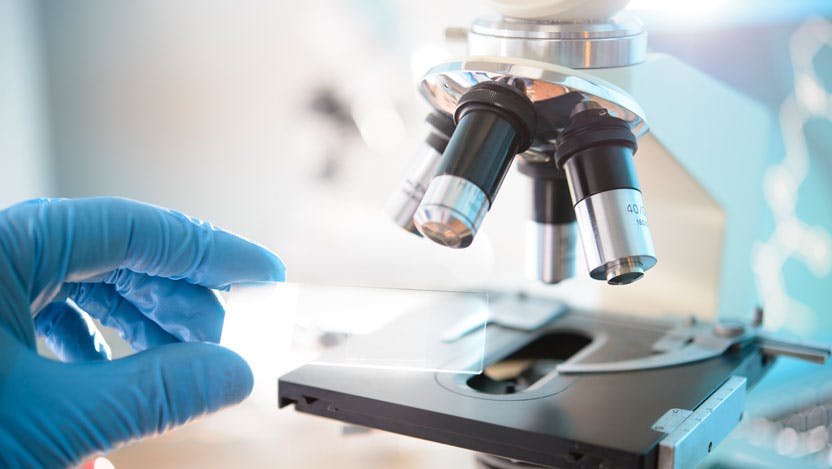GOAL Consortium formed to empower academic molecular testing laboratories

As genetic sequencing technology has progressed, so have the abilities of pathologists and oncologists to provide personalized diagnoses and treatments to cancer patients. But along with more precise treatments come increased costs of doing the analysis — and those expenses can make it difficult for academic pathology labs to conduct their work.
Working mostly behind the scenes and out of the sight of patients, molecular pathologists use patient tumor samples to read the genetic signature of a person’s tumor using the latest in large-scale DNA sequencing and informatics technologies. Based on which genetic mutations are found, the tests help both determine the patient’s diagnosis and personalize their cancer therapy.
While tumor samples can be sent out to large, external companies for processing, keeping these analyses in-house streamlines the process and improves communication between the pathologist and oncologists. This in turn helps to provide timely and accurate diagnoses and effective treatment.
Conducting cancer screening panels has started to become cost-prohibitive for academic pathology labs — in large part because the reagents necessary for the testing, and in particular the genetic probes, are becoming too expensive for smaller labs.
Recently, Jeremy Segal, MD, PhD, faced a dilemma with a key laboratory reagent underpinning the UChicago comprehensive tumor sequencing panel.
Responding to the latest science and translating it quickly into diagnostics to help treat our cancer patients is a constant, challenging process. But working together as a group makes everything easier.
“We wanted to switch to a new manufacturer for our probes for our test, but buying from the ideal vendor required placing a huge, expensive order for a vast surplus of probes. It would cost 10 times as much as our previous source, but it would be enough for many lifetime supplies,” said Segal, Associate Professor of Pathology at UChicago Medicine. “So, it didn’t make perfect sense for us by ourselves, but what about sharing it?”
He reached out to a long-time friend and colleague, Dara Aisner, MD, PhD, at the University of Colorado Cancer Center to see if she might be interested in sharing resources. But even split between two labs, the price tag was still steep — so Segal and Aisner began to reach out to other colleagues around the country to pitch the idea, which turned out to be surprisingly popular.
“It was a very different way of buying probes and developing oncology tests than people were used to, so we were hoping we could get even three or four lab directors to join us. We were shocked when we ended up with a total of 17,” said Segal. “It was a bit daunting: Overnight we had a large consortium and a big design project to work through. But we all worked together and made it successful.”
What began simply as a collaboration to save money has turned into something more. “Originally the plan was to buy these reagents and then all go our separate ways, but we’ve come to understand that there’s a lot more that we can do together as an academic community and a lot more benefit for the individual labs if we can leverage some of these things jointly,” said Aisner, Associate Professor of Pathology at the University of Colorado.
The consortium, formally titled the Genomic Organization for Academic Laboratories (GOAL), has now launched as an independent non-profit organization to facilitate the collaborative relationship between the 28 academic laboratories that are now involved in the network.
In addition to launching their new probe panels in at least seven of the 28 labs now included in the consortium (with many more labs actively working to deploy testing with these probes), the pathologists in the collaborating labs began to connect more directly, asking one another questions and sharing protocols.
“We even have a monthly meeting now, where people can come with whatever questions they have and troubleshoot problems that they might be dealing with,” said Aisner. “It’s really shifted the paradigm toward communal development, instead of everyone working alone and totally independently.”
Now, the consortium is working on a concordance study, collecting data from individual labs in the group to determine how the results from each team line up. Possible future efforts may include providing data sharing resources and multi-institutional studies, in addition to expanding the support network of the consortium.
“There are many directions we can go, and we’re not sure exactly where we’ll take it, but there’s no shortage of work to do,” said Segal. “Responding to the latest science and translating it quickly into diagnostics to help treat our cancer patients is a constant, challenging process. But working together as a group makes everything easier.”
